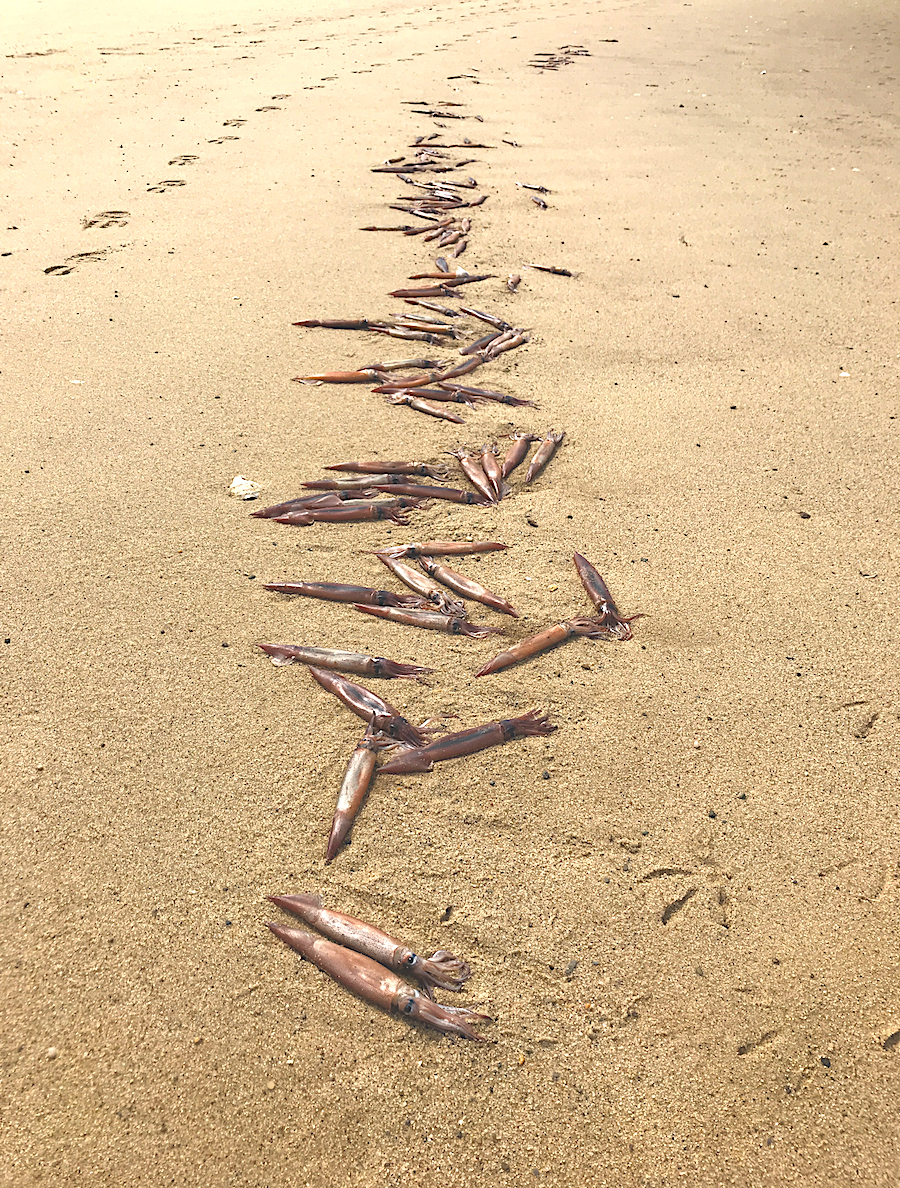“They showed up early and left quickly,” said a Provincetown harbormaster.
“Shortfin squid are everywhere,” said Owen Nichols of the Center for Coastal Studies. “For longfin, the Nantucket Sound fishery was late and short this year.”
So there you have it, from two great sources: squid were everywhere and nowhere at the same time. They are slippery critters, for sure.

We have two species of squid in our fishery: longfin (Doryteuthis pealii, a.k.a. bone squid or loligo) and shortfin (Illex illecebrosus, a.k.a. Boston squid). It is usually the longfin that come inshore and that we catch under the lights at MacMillan Pier. The shortfin traditionally stay offshore but are known to make inshore appearances.
The commercially squid picture is complicated. “Big picture as far as the fisheries go: longfin is down and shortfin is up, in keeping with the last couple years,” Nichols said, adding, “Only half the longfin quota has been caught, while the shortfin fishery has exceeded its quota by a little bit and is shut down.” The effect of quotas may seem odd, but as a federal monitor described to me, when the populations are robust, squidders catch a lot, hit the quota early, and shut down the fishery, even though it’s healthy.
On a more local scale, the squid seemed harder to find at MacMillan this past summer — I saw many bored squidders sitting under the lights. Sure, the squid were there, but on the bottoms and holding tight, and not always where squidding was allowed.
It was rare to see a shoal of squid swim languorously by, as we have in summers past. Instead, they would attack the surface-swimming mackerel in a flash, with a glorious display of speed and prowess.
Just down the road in Wellfleet, there was a bona fide squid stranding in June. It was a one-day event and happened, notably, on the solstice. There were hundreds, possibly thousands, stranded on the shore at Indian Neck during the morning tide, and not again.
Why the solstice? Well, only Mother Nature knows, but it makes sense that a creature that has survived over six hundred million years and five great extinctions may also hold some secrets that connect it to nature’s cycle. And what cycle is bigger than the sun’s?

That same day, a Japanese group posted an Instagram of a mass stranding there, claiming it was related to mating behaviors. This jibes with two observations I made while squidding on the night of the solstice.
The squid we caught were all shortfin, an abnormality. They were full of seed and eggs. Most intriguing to me, we caught almost a bucket — as many as 100 squid — and there was not one incident of inking, an otherwise common event. Clearly, these squid were saving their energy for something more urgent.
That night I also witnessed one of the more amazing sights of my squidding life: Wellfleet fisherman Al Emmons landing five squid on one cast. Five! Three was his previous record.
Looking back over the decade, all that can be said is, “What a ride it was!” We saw the pier bubble with excitement, near fights, and major controversies around access. The first squid genome sequence was published, and scientists at the Woods Hole Oceanographic Institution studied the way cephalopods (and only cephalopods) edit their own RNA molecules.
And then there’s the mysterious Kraken (giant squid). Though a few carcasses had washed up onshore, the first live one was filmed in 2012. And scientists showed that giant squid around the globe are all one species, unlike market squid, the species of which differ by location.
In the future, I expect great work from Brett Grasse and his group at Woods Hole, who are trying to determine how to raise our local squid in captivity. If anyone can do it, it’s Brett and his team.



